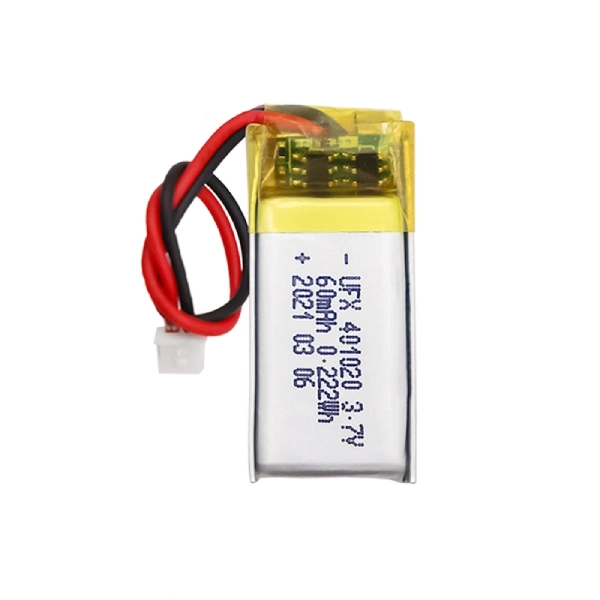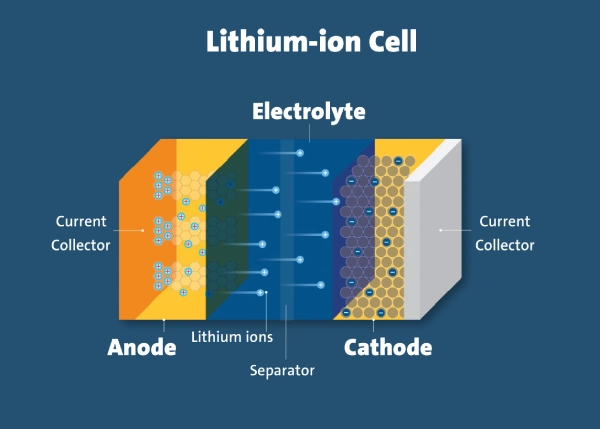Part1. Lithium battery type
Not all lithium batteries are rechargeable. Lithium batteries are divided into two types: rechargeable batteries and non-rechargeable batteries. Among them, rechargeable batteries are divided into lithium-ion batteries and lithium-polymer batteries.

Non-rechargeable batteries (disposable batteries)
Non-rechargeable batteries (disposable batteries) can only convert chemical energy into electrical energy once. They cannot restore electrical energy to chemical energy (or have extremely poor reduction performance). Due to the presence of lithium metal, non-rechargeable batteries (disposable batteries) cannot be recharged once they lose power and can only be recycled.
Rechargeable lithium battery (secondary battery)
Rechargeable batteries are called secondary batteries (also called storage batteries). It can convert electrical energy into chemical energy and store it. When used, chemical energy is converted into electrical energy. Rechargeable batteries can be cycled through charge and discharge.
Lithium-ion and lithium-polymer batteries
Lithium-ion batteries and lithium polymer batteries are both rechargeable batteries. The lithium-ion battery is a relatively common and widely used lithium battery. It is characterized by large capacity, long life, safety, and reliability. It can meet the needs of mobile electronic equipment, electric vehicles, etc.
Polymer lithium batteries have higher capacity, lighter weight, and are safer and are the future development trend.
Part 2. How does a rechargeable battery work?
The charging process of lithium batteries can be divided into three stages: Pre-Charging Mode, Fast Charging Mode, and Constant Voltage Mode.

The charging method of lithium batteries is voltage limiting and constant current, which is controlled by IC chips.
The typical charging method for lithium batteries is first to detect the voltage of the battery to be charged. If the voltage is lower than 3V, precharge must be performed first. The charging current is 1/10 of the set current. After the voltage rises to 3V, it enters the standard charging process.
The standard charging process is constant current charging with a set current. When the battery voltage rises to 4.20V, it changes to constant voltage charging to keep the charging voltage at 4.20V. At this time, the charging current gradually decreases. When the current drops to 1/10 of the set charging current, charging ends.
Part 3. Types of non-rechargeable lithium batteries
What is a non-rechargeable lithium battery?
Non-rechargeable lithium batteries are those that cannot be recharged after the battery is used up.
There are many kinds of non-rechargeable lithium batteries. The common ones are lithium-manganese dioxide batteries, lithium-thionyl chloride batteries, and lithium and other compound batteries. This article only introduces the first two most commonly used ones.
1. Lithium-manganese dioxide battery
Lithium-manganese dioxide battery is a disposable battery that uses lithium as the anode, manganese dioxide as the cathode, and an organic electrolyte.
- The battery voltage is high. The rated voltage is 3V (twice that of general alkaline batteries).
- The termination discharge voltage is 2V. The discharge voltage is stable and reliable.
- It has good storage performance (over three years of storage time).
- Low self-discharge rate (annual self-discharge rate ≤ 2%).
- Working temperature range -20℃~+60℃.
Lithium-manganese dioxide batteries can be made into different shapes to meet different requirements. It has rectangular, cylindrical, and button shapes. Cylindrical batteries also come in different diameters and height sizes.
2. Lithium-thionyl chloride battery
Lithium-thionyl chloride batteries are relatively high-energy batteries.
- It has extremely flat discharge characteristics when discharging at medium current (can discharge flatly within 90% capacity range).
- The battery can work within the range of -40℃~+85℃. However, the capacity at -40℃ is about 50% of the normal temperature capacity.
- Low self-discharge rate (annual self-discharge rate ≤ 1%).
- The storage life is more than ten years.
Part 4. Use non-rechargeable batteries
The above two lithium batteries are disposable and are not rechargeable (dangerous when charging).
- There must be no short circuit between the positive and negative terminals of the battery;
- Do not discharge with excessive current (discharge exceeding the maximum discharge current);
- When the battery reaches the end discharge voltage, it should be removed from the electronic device in time;
- Used batteries cannot be squeezed, burned, or disassembled;
- Do not use it beyond the specified temperature range.
Since the voltage of lithium batteries is higher than that of ordinary batteries or nickel-cadmium batteries, do not make mistakes when using them to avoid damaging the circuit. By familiarizing yourself with the CR and ER in the model number, you can know its type and rated voltage. When buying a new battery, be sure to buy it according to the original model. Otherwise, it will affect the performance of the electronic device.
Part 5. Uses rechargeable lithium battery
Although rechargeable batteries can be charged, there are a few things to note when charging.
1. Use the correct rechargeable lithium battery charger
The lithium battery charger must match the battery. Generally speaking, the charger output voltage must be consistent with the rated voltage of the lithium battery.
2. Avoid overcharging or over-discharging when charging
The charging current and charging time must be controlled when charging lithium batteries to avoid overcharging caused by excessive charging current or overcharging caused by too long charging time. At the same time, avoid excessive discharge during use; otherwise, it will affect the battery life.
3. Pay attention to safety when charging
When charging rechargeable lithium batteries, problems such as overheating and overcooling should be avoided to avoid affecting battery life and safety. It is recommended to place the battery in a well-ventilated area while charging and monitor temperature changes during charging.
When using rechargeable lithium batteries, you must pay attention to the correct charger, charging method, and safety issues. At the same time, you also need to pay attention to the life and safety of the battery to avoid damage or safety accidents caused by improper use.
Part 6. FAQs
-
Can I recharge a non-rechargeable lithium battery?
No, non-rechargeable lithium batteries should not be recharged. Attempting to recharge them can lead to safety hazards, such as leakage or explosion. -
How long do non-rechargeable lithium batteries last?
Non-rechargeable lithium batteries have a limited lifespan and typically last for several cycles or usage hours, depending on the application and battery quality. -
Does lithium-ion mean rechargeable?
No, there are rechargeable lithium batteries and non-rechargeable lithium batteries. -
Is there a special charger for lithium batteries?
Yes, there are special chargers designed specifically for lithium batteries. These chargers employ proper charging algorithms and safety features to ensure efficient and safe charging of lithium batteries.
Related Tags:
More Articles

Overview of Deep Cycle Lithium Battery
In this article, we explore the life, voltage, capacity, and charging considerations of deep cycle lithium batteries.
How Long do Lithium Batteries Last?
How long do lithium batteries last? we will explore the factors that influence the lifespan of lithium batteries and provide insights into their longevity.
How to Choose the Best LiFePO4 Battery?
Choose LiFePO4 batteries for superior performance, safety, and versatility in EVs, UPS, and backup power. This guide helps you make informed decisions.
Get 12v Lithium Car Battery As a Power Source for the Ride
Make the right choice for your vehicle's battery needs by installing a 12 volt lithium car battery. You will enjoy maintenance-free longevity with this change.
Everything About A Small Lithium Ion Battery
Discover the features, uses & future potential of a small lithium ion battery. A compact and tiny powerhouse ideal for smartphones, wearables, drones & more.



